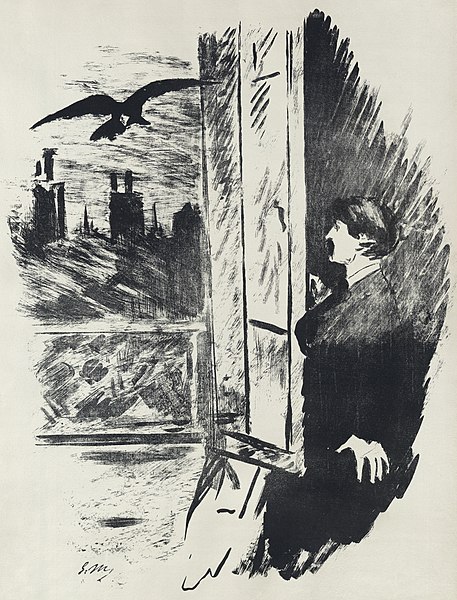Today I want to talk about corvid (the word and the bird).

This is a corvid. (Photo by Tyler Quiring.)

This is a COVID. (Artist’s rendering, courtesy of the CDC.)

This is neither, though it looks like one and it looks like it’s meant for dealing with the other. (It’s an illustration of Dr. Schnabel, a 17th-century plague doctor in Rome, by Paul Fürst.)
Corvid is a name for any member of the large family of birds known as Corvidae, which includes crows, ravens, and actually quite a lot of others: choughs (not coughs!), treepies, magpies, nutcrackers, jackdaws (which are really just more crows), and various jays
Corvids have relatively large brains and have been found to be as intelligent as some primates – and smarter than your dog or cat. Crows and ravens are even smarter than raccoons. Which also means that they have an… ambiguous place in mythology. Crows and ravens are thought of as smart – and as tricksters. They’re often associated with death.
On the other hand, corvids come in many different forms, and some of them (magpies) are more famous for stealing and collecting things. Which is quite fitting, because their names have mutated like a virus over the ages, resulting in quite a collection of forms.
The Latin for ‘crow’ is corvus, which has descended to many fairly plainly related forms: French corbeau, Spanish cuervo, Italian corvo, Finnish korppi (stolen from Swedish korp). They all trace back to an ancient k-r-w source… which may or may not be related to the source of crow, since the w in crow is historically comparatively new.
Sounds change, as you can see. The w can become v or b or even p. And the k can become h, and sometimes an h disappears. That’s what happened with hræfn, the Old English word that became raven.
The raven is Corvus corax. What’s the corax? It’s the ancient Greek for ‘raven’ or ‘crow’: κόραξ. And, yes, there’s a k and a r there… and it also seems related etymologically to raven, via an impression of the loud sound the bird makes. But, though they all relate originally to noise, raven and corax are not definitely directly related to corvus or to crow, which, just, come on.
Corvus corax, by the way, is also the name of a musical group that is among the most metal of medieval impressionists.
You may well wonder whether this is also related to some flattened version of curve, since, after all, there’s that k-r-v and corvids have shown they can throw a few curves. The, answer, however, is no… but curve traces back to a Proto-Indo-European root with many descendants, including not just curve but cancer, crisp, crux, and corona, as in Coronavirus. Which seems a little starker than raven.
But corvids have nothing in specific to do with COVID. We don’t even know (at the moment) if they can carry it. They can, however, say what we all want to say about it:

“Nevermore.” (Illustration by Édouard Manet.)





